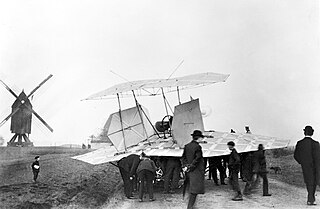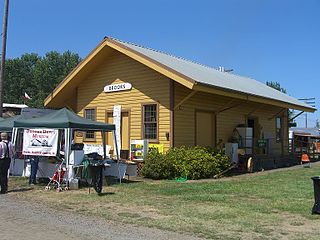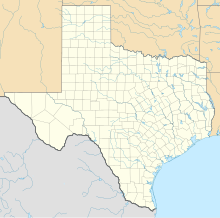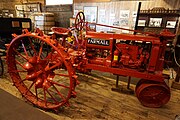
Pittsburg is a city and the county seat of Camp County, Texas, United States. As of the 2010 census, the city had a total population of 4,497. It is best known as the former home of the giant poultry producer Pilgrim's and the home of racing legend Carroll Shelby. Pittsburg is also the birthplace of Cavenders Boot City. It is also the hometown of Tennessee Titan Kendall Wright. In 1902, it was the site of an early flight attempt by the Ezekiel Air Ship Mfg Co.

USS Shenandoah was the first of four United States Navy rigid airships. It was constructed during 1922–1923 at Lakehurst Naval Air Station, and first flew in September 1923. It developed the U.S. Navy's experience with rigid airships, and made the first crossing of North America by airship. On the 57th flight, Shenandoah was destroyed in a squall line over Ohio in September 1925.

Karl Jatho was a German inventor and aviation pioneer, performer and public servant of the city of Hanover.

Samuel Franklin Cowdery was a Wild West showman and early pioneer of manned flight. He is most famous for his work on the large kites known as Cody War-Kites, that were used by the British before World War I as a smaller alternative to balloons for artillery spotting. He was also the first man to fly an aeroplane built in Britain, on 16 October 1908. A flamboyant showman, he was often confused with Buffalo Bill Cody, whose surname he took when young.
This is a list of aviation-related events from 1902:

The Henry Ford is a large indoor and outdoor history museum complex and a National Historic Landmark in the Detroit suburb of Dearborn, Michigan, United States. The museum collection contains the presidential limousine of John F. Kennedy, Abraham Lincoln's chair from Ford's Theatre, Thomas Edison's laboratory, the Wright Brothers' bicycle shop, the Rosa Parks bus, and many other historical exhibits. It is the largest indoor-outdoor museum complex in the United States and is visited by over 1.7 million people each year. It was listed on the National Register of Historic Places in 1969 as Greenfield Village and Henry Ford Museum and designated a National Historic Landmark in 1981 as "Edison Institute".

The Wright Flyer was the first successful heavier-than-air powered aircraft. It was designed and built by the Wright brothers. They flew it four times on December 17, 1903, near Kill Devil Hills, about four miles (6.4 km) south of Kitty Hawk, North Carolina. Today, the airplane is exhibited in the National Air and Space Museum in Washington D.C. The U.S. Smithsonian Institution describes the aircraft as "the first powered, heavier-than-air machine to achieve controlled, sustained flight with a pilot aboard." The flight of Flyer I marks the beginning of the "pioneer era" of aviation.
The Wright Flyer III was the third powered aircraft by the Wright Brothers, built during the winter of 1904-05. Orville Wright made the first flight with it on June 23, 1905. The Flyer III had an airframe of spruce construction with a wing camber of 1-in-20 as used in 1903, rather than the less effective 1-in-25 used in 1904. The new machine was equipped with the engine and other hardware from the scrapped Flyer II and—after major modifications—achieved much greater performance than Flyers I and II.

The North Carolina Transportation Museum is a museum in Spencer, North Carolina. It is a collection of automobiles, aircraft, and railway vehicles. The museum is located at the former Southern Railway's 1896-era Spencer Shops and devotes much of its space to the state's railroad history. The museum has the largest collection of rail relics in the Carolinas. Its Back Shop building of nearly three stories high is most notable for its size of two football fields long.

San Diego Air & Space Museum is an aviation and space exploration museum in San Diego, California, United States. The museum is located in Balboa Park and is housed in the former Ford Building, which is listed on the US National Register of Historic Places. SDASM was established by articles of incorporation on October 12, 1961 and opened to the public on February 15, 1963.

Wright Brothers National Memorial, located in Kill Devil Hills, North Carolina, commemorates the first successful, sustained, powered flights in a heavier-than-air machine. From 1900 to 1903, Wilbur and Orville Wright came here from Dayton, Ohio, based on information from the U.S. Weather Bureau about the area's steady winds. They also valued the privacy provided by this location, which in the early twentieth century was remote from major population centers.

College Park Airport is a public airport located in the City of College Park, in Prince George's County, Maryland, United States. It is the world's oldest continuously operated airport. The airport is located south of Paint Branch and Lake Artemesia, east of U.S. Route 1 and the College Park Metro/MARC station and west of Kenilworth Avenue.

The EAA Aviation Museum, formerly the EAA AirVenture Museum, is a museum dedicated to the preservation and display of historic and experimental aircraft as well as antiques, classics, and warbirds. The museum is located in Oshkosh, Wisconsin, adjacent to Wittman Regional Airport, home of the museum's sponsoring organization, the Experimental Aircraft Association (EAA), and the organization's EAA AirVenture Oshkosh event that takes place in late July/early August.

Powerland Heritage Park, formerly known as Antique Powerland, is a collection of museums and a self-described heritage site for power equipment, such as farm machinery, commercial trucks, trains, construction equipment, and the engines which power them. It is located in Brooks, Oregon, United States, and is operated by the non-profit Antique Powerland Museum Association. It was initially established by a group of enthusiasts "dedicated to the preservation, restoration and demonstration of steam powered equipment, antique farm machinery and implements."

The Frontiers of Flight Museum is an aerospace museum located in Dallas, Texas, founded in November 1988 by William E. Cooper, Kay Bailey Hutchison, and Jan Collmer. Originally located within a terminal at Dallas Love Field, the museum now occupies a 100,000-square-foot (9,300 m2) building at the southeast corner of Love Field on Lemmon Avenue. The museum is an affiliate within the Smithsonian Affiliations program.

The Arkansas River Valley is a region in Arkansas defined by the Arkansas River in the western part of the state. Generally defined as the area between the Ozark and Ouachita Mountains, the River Valley is characterized by flat lowlands covered in fertile farmland and lakes periodically interrupted by high peaks. Mount Magazine, Mount Nebo, and Petit Jean Mountain compose the Tri-Peaks Region, a further subdivision of the River Valley popular with hikers and outdoors enthusiasts. In addition to the outdoor recreational activities available to residents and visitors of the region, the River Valley contains Arkansas's wine country as well as hundreds of historical sites throughout the area. It is one of six natural divisions of Arkansas.
Several aviators have been claimed as the first to fly a powered aeroplane. Much controversy has surrounded these claims. It is most widely held today that the Wright Brothers were the first to fly successfully. Brazil regards Alberto Santos-Dumont as the first successful aviator because the Wright Flyer took off from a rail and, after 1903, used a catapult. An editorial in Jane's All the World's Aircraft's 2013 edition supported the claim of Gustave Whitehead.

The Ezekiel Airship was an early experimental aircraft conceived, designed, and built by the Baptist minister Burrell Cannon, an experienced sawmill operator born in 1848 in Coffeeville, Mississippi. Inspired by and named after the Book of Ezekiel, the craft's design featured four "wheel within a wheel" paddle wheels powered by a four-cylinder gasoline engine. There are unverified claims that it was flown in 1902 in Pittsburg, Texas, a year before the Wright Flyer flew at Kitty Hawk, North Carolina.




















